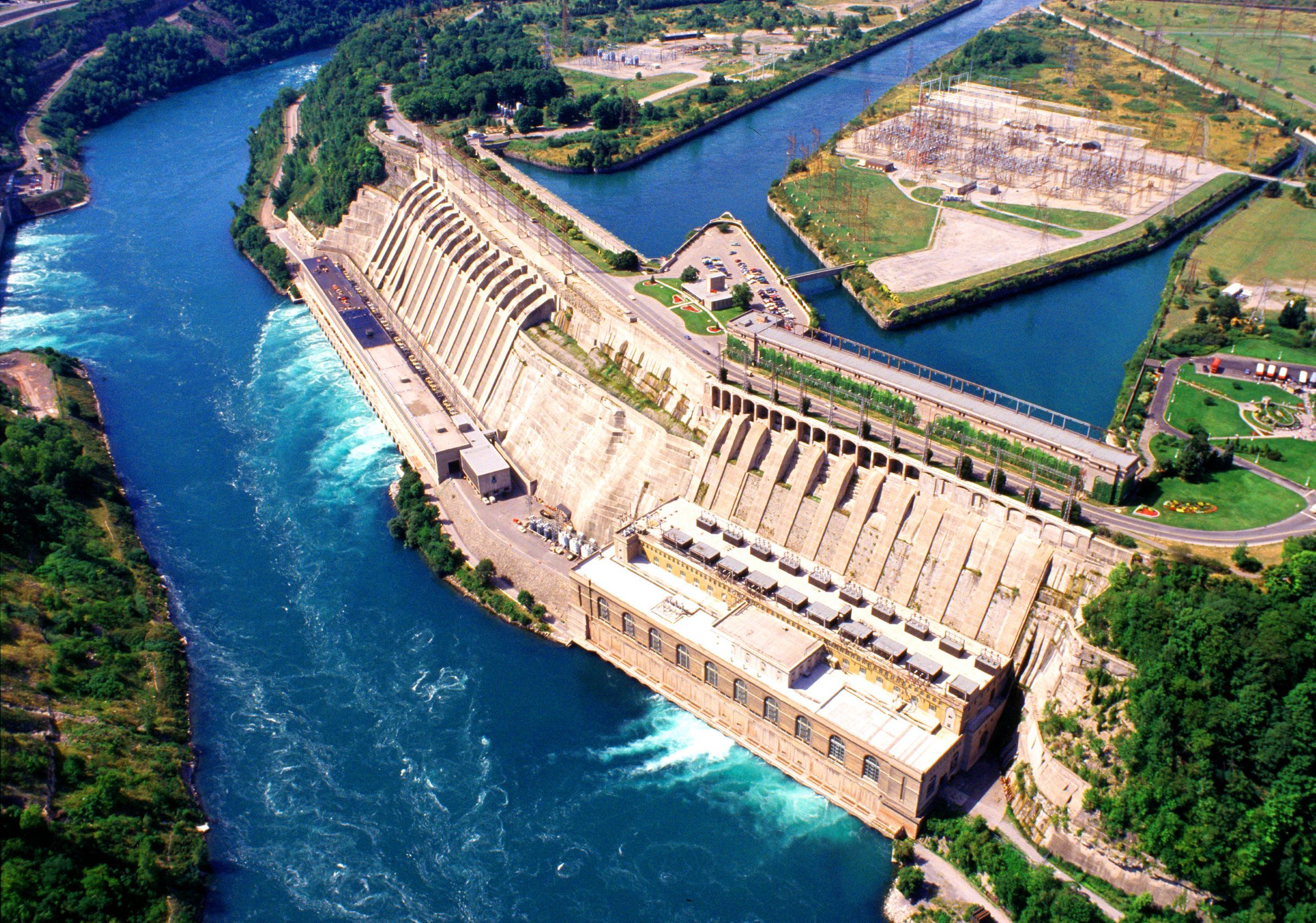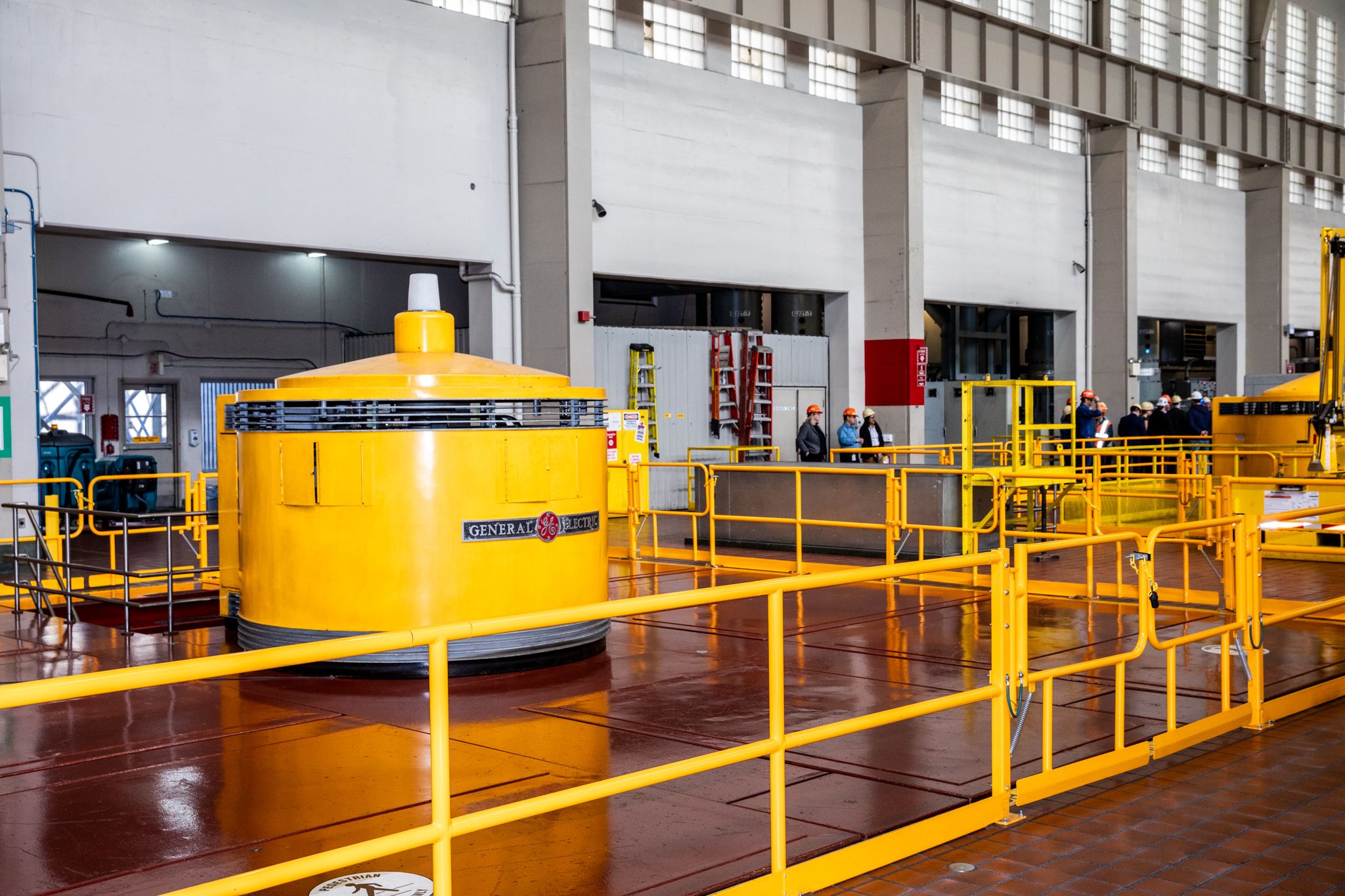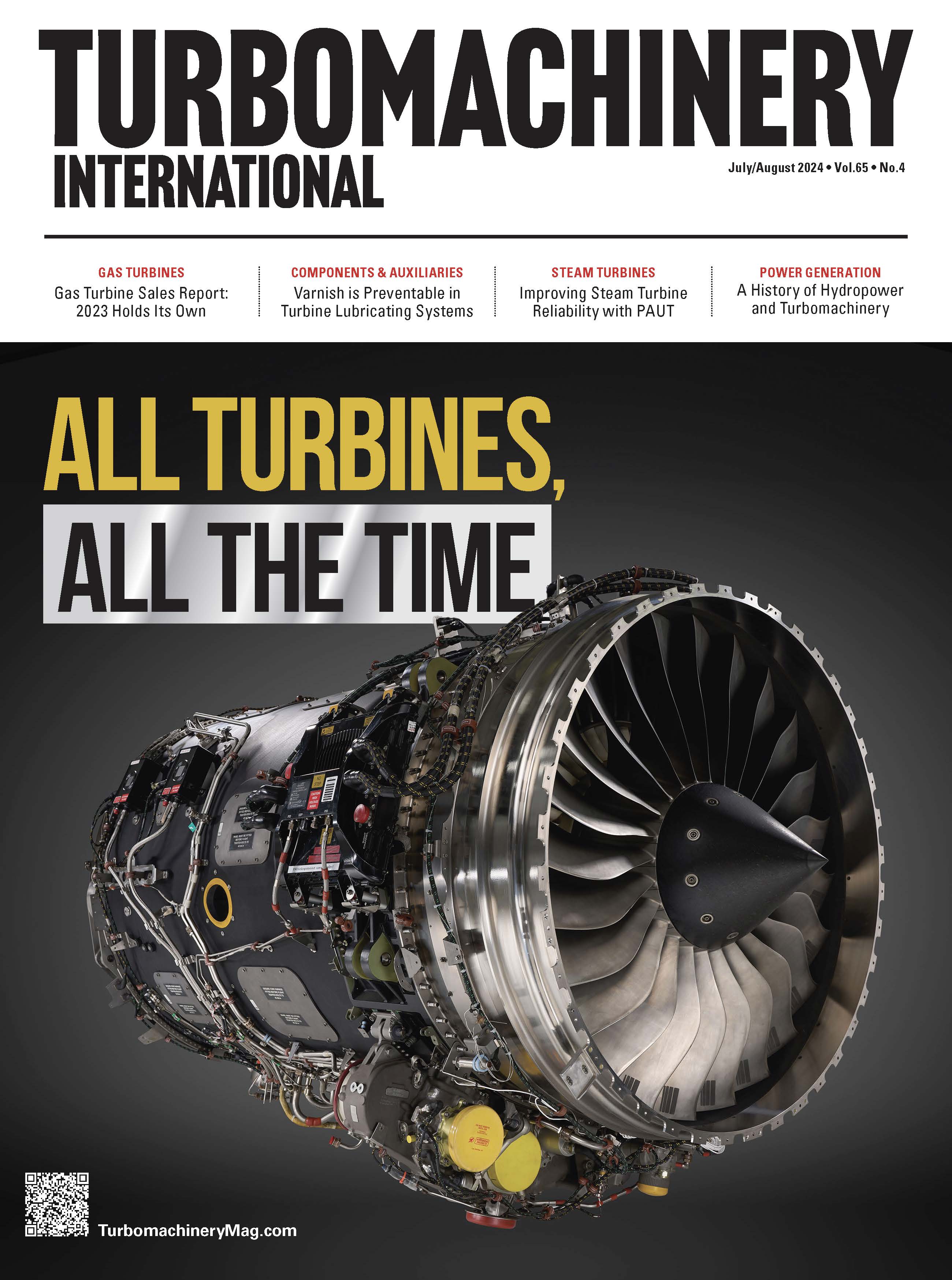A History of Hydropower and Turbomachinery
Hydropower’s continued use as a renewable energy source requires complex hydro turbines and other rotating machines to electrify many regions worldwide.
The Niagara Falls region has been a hotbed for harnessing hydropower since the mid-1700s when power was initially obtained by diverting water from the falls to turn waterwheels at a small sawmill—an early form of the hydro turbine. Since then, advancements in hydro turbine technology and the buildout of hydroelectric plants transformed the region into an epicenter of continuous sustainable power.
Today, hydroelectric power plants in the Niagara Falls’ Canadian region generate almost 2 million kW of electricity, while the American plants—Robert Moses Niagara Power Plant and the Lewiston Pump Generating Plant—combine for more than 2.6 million kW. Between these two plants, a combined 25 turbines are being spun. In fact, Niagara Falls is New York State’s biggest electricity producer. According to the U.S. Department of Energy, hydropower accounts for 28.7% of the country’s total renewable electricity generation and approximately 6.2% of total electricity generation.
The Ontario region, via a partnership between Ontario Power Generation (OPG) and GE Vernova, established a 15-year plan to refurbish up to five hydropower plant stations; this includes up to 25 units at the Sir Adam Beck Complex in Niagara Falls—increasing its capacity by up to 50 MW. The hydroelectric refurbishment plans will help secure up to 1,700 MW of clean electricity and extend their life by another 30 years.
Sir Adam Beck hydropower complex. Credit: GE Vernova

Hydropower stations house complex rotating machinery that is exposed to environmental elements, varying elevations, and more, day in and day out. But there is no one-size-fits-all turbomachine used in hydropower plants.
“In a hydropower plant, the rotating machines—turbines and generators—convert the mechanical energy of flowing water through the units into electrical energy delivered to the grid. According to the site characteristics, mainly the differences in elevation between upstream and downstream reservoirs or river levels, different kinds of turbines [can be installed],” explained Jean-Michel Milles, Hydro Power Head of Engineering at GE Vernova’s Hydro Business.
TYPES OF TURBINES AND ROTATING EQUIPMENT AT HYDROPOWER STATIONS
Milles reviewed the three most common hydro turbines:
- Pelton turbines are used for heads between 200 and 1,000 meters.
- Francis turbines are used for heads between 50 and 300 meters.
- Kaplan units are for heads lower than 50 meters.
“For pumped storage plants—where water is transferred from upstream reservoirs to downstream reservoirs (in generation mode) and then back to the upstream reservoir (in pump mode)—‘reversible Francis’ turbines are coupled to a motor generator,” he said. “These pumped storage plants are becoming increasingly important to stabilize the grid due to the growth of intermittent renewable energy sources like solar and wind. The rotational speed of the turbine and generator is also driven by site characteristics and targeted unit output, which results in a wide range of speeds—from around 60 rpm for large units under low head to around 1,000 rpm for small units under high head.”
One of the major differences between Kaplan turbines and other hydraulic turbines, such as Francis or Pelton, is they have movable blades assembled on a hub so that the blades are not attached to a shroud.
“These movable blades maintain a high efficiency on a wide operating range, but since the blades only attach to the hub and not to a shroud, they can only sustain low heads of up to 50 meters,” Milles said. “The typical arrangement of a Kaplan is with a vertical rotational axis, but for very low heads, horizontal-axis turbines have adjustable rotor blades with a straight intake, straight diffuser, and generator located in an enclosure inside the flow. This leads to an even higher performance with a unitary output limited to around 90 MW due to the generator arrangement—these are called bulb turbines.”
EFFICIENCY AND MAINTENANCE
A hydro turbine’s efficiency may decrease due to energy losses, including friction losses or losses due to the poor incidence of water on the turbine blades. Components within these turbines, such as adjustable rotor blades and inlet guide vanes, are designed to maximize the efficiency of hydropower operations.
“The role of the inlet guide vanes is to improve the flow incidence on the rotor blades over the whole head range of the unit,” Milles added. “Then, when the turbine is equipped with adjustable rotor blades, as is the case for Kaplan units, these adjustable blades deliver a flow that helps to reduce energy losses in the rotor itself and in the components downstream over the whole discharge range of the unit.”
Interior of Ontario Power Generation's Sir Adam Beck Complex. Credit: GE Vernova

Upkeep of hydro turbines requires periodically checking for seals, clearances, status reports on some components such as bolts and profiles, and replacing worn equipment as needed.
Maintenance considerations differentiate the upkeep of these units from land-based turbomachinery. “Compared to a gas turbine, the components of the hydro turbine are not exposed to very high temperatures; on the other hand, maintenance of a hydro turbine is significantly driven by site characteristics, such as the water quality,” Milles said. “Chemical composition and the quantity of sediments influence water abrasiveness and/or erosion and can impact component lifetime.”
TRENDS AND ADVANCEMENTS
While the hydropower space continues to expand—GE Vernova has more than 6,000 MW of projects under development globally—the technology itself is mature, but Milles said that doesn’t mean hydropower is not constantly innovating. Modified processes, implementing outside technologies, and environmental considerations are driving forces behind trends and innovations.
“In recent years, there has been a focus on increasing the flexibility of the hydropower plant to help increase performance, but more importantly to help stabilize the grid through wider operating ranges, start-and-stops, hydraulic short circuits, and more,” Milles said. “Also, we’ve seen some key innovations such as robotic inspections to improve maintenance activities and fish-friendly turbine designs for environmental purposes.”
